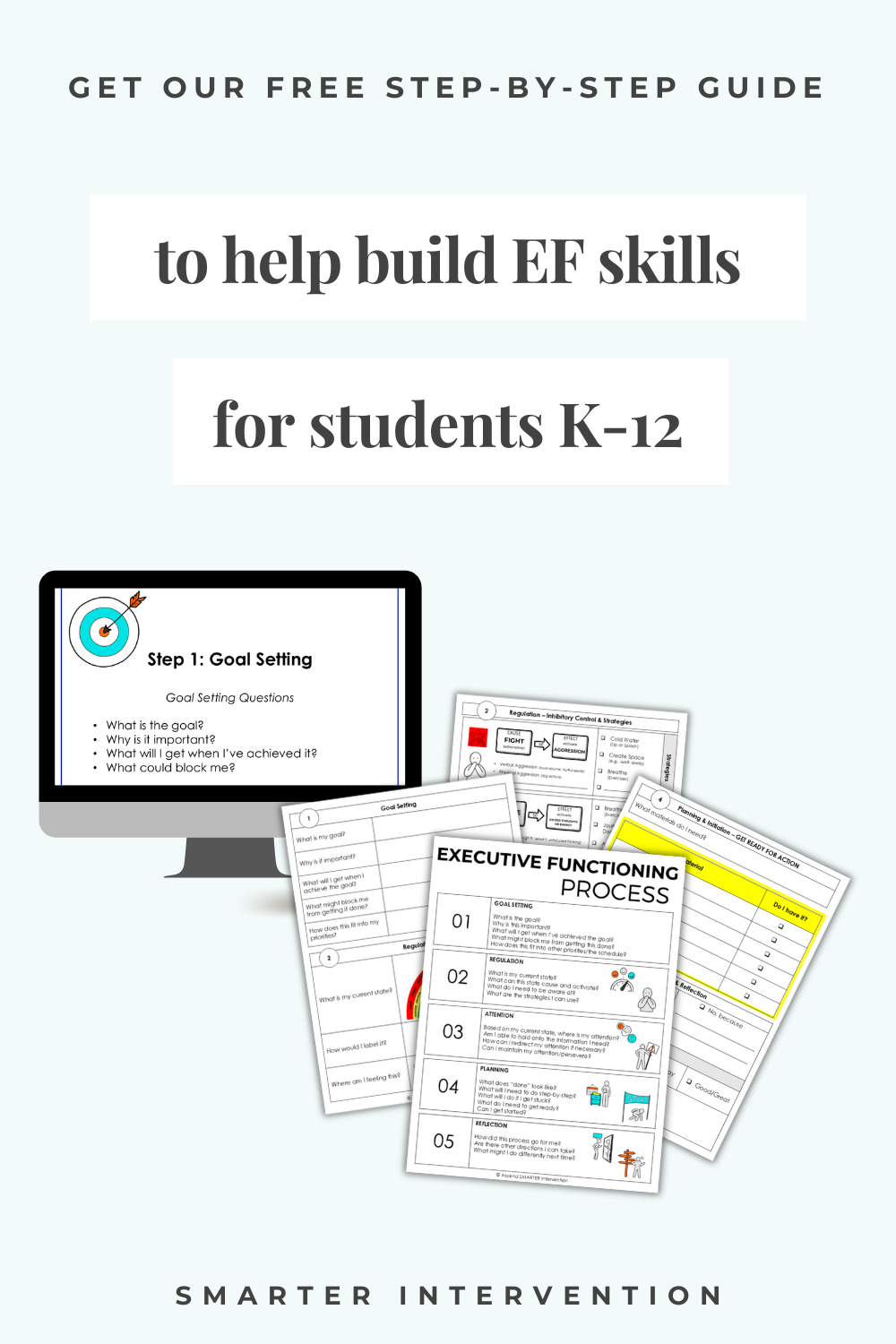Executive Functioning: Organization
When we think about "organization," it’s easy to picture tidy desks or color-coded folders. But in executive functioning, organization is not about neatness.
It’s about creating structure that supports follow-through.
Organization plays a critical role in helping students plan, prioritize, initiate tasks, and manage time. Without organizational systems in place, even strong planning skills can fall apart.
What Is Organization in Executive Functioning?
Organization refers to a student’s ability to:
Manage materials and resources
Keep track of information
Structure tasks and work products
Maintain systems over time
Within our 5-Step Executive Functioning Framework, organization lives in Step 4: Planning.
Planning answers the question “What needs to happen?” Organization answers the question “Where does everything live so that can happen?”
How Organizational Challenges Show Up in the Classroom
When students struggle with organization, it often looks like:
Missing or misplaced materials
Incomplete or late assignments
Difficulty starting tasks
Disorganized written work or projects
Time lost searching for what they need
These challenges are rarely about effort. They reflect a lack of external structure.
Organization Is a Support Skill, Not a Trait
Organization is often treated as a personal quality, “they’re just disorganized.” In reality, organization is a support skill that develops when students are taught systems they can rely on.
Strong organizational systems:
Reduce cognitive load
Make expectations visible
Support independence over time
When organization is externalized, students don’t have to hold as much in their heads.
1. Organization of Materials
When students know where materials belong, they can use instructional time more efficiently.
Disorganization of materials often leads to delays getting started, increased frustration, missed opportunities to engage
Classroom supports may include:
A brief end-of-period “reset” routine to organize materials
Visual checklists or desktop tools for self-monitoring
Explicit modeling of how materials are labeled, stored, and retrieved
2. Organization of Tasks
This is where planning and prioritization come in. Many students struggle not because they’re unwilling to do the work, but because they aren’t sure where to start or how to structure their time.
Try this:
Model how to break down assignments using a timeline or checklist.
Use sentence stems like: “First I’ll… Then I’ll… Finally I’ll…” to help students verbally plan.
Scaffold task planning by working as a class to outline multi-day projects together.
You can also explicitly teach students to preview instructions, gather materials before starting, and identify the steps needed to complete a task, skills that often go unspoken but make a huge difference in work completion.
3. Organizational Routines That Reduce Cognitive Load
Even small routines can help students internalize organizational strategies. Checklists, packing routines, and consistent expectations reduce cognitive load and help students stay on track.
Effective classroom routines help reduce decision fatigue, increase predictability, and support smoother transitions
Examples include:
A visible class “to-do” board
Daily or weekly checklists for materials and assignments
Consistent verbal cues for transitions and wrap-up
When routines are consistent, students can focus their attention on learning rather than logistics.
How Organization Supports the Entire Planning Process
Organization holds planning in place. When students have clear systems for materials, structured ways to organize tasks, and predictable routines, they are more likely to initiate tasks, manage time effectively, persevere through challenges, and complete work independently.
Organization is not an extra step. It is the structure that allows planning to work.
Want a simple way to support this process?
We use our 5-Step Executive Functioning Guide to help students organize materials, structure tasks, and follow through on plans with greater consistency.
This guide includes:
Visual planning and organization prompts
Step-by-step task breakdowns
A printable version of our Guided EF Folder for deeper support


